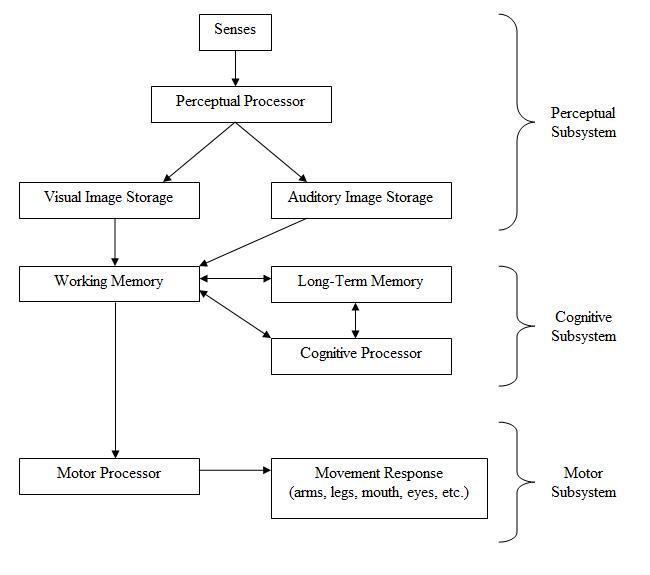 | ||
Human processor model or MHP (Model Human Processor) is a cognitive modeling method used to calculate how long it takes to perform a certain task. Other cognitive modeling methods include parallel design, GOMS, and KLM (human-computer interaction).
Contents
Cognitive modeling is the methods are one way to evaluate the usability of a product. This method uses experimental times to calculate cognitive and motor processing time. The value of the human processor model is that it allows a system designer to predict the performance with respect to time it takes a person to complete a task without performing experiments. Other modeling methods include inspection methods, inquiry methods, prototyping methods, and testing methods.
The standard definition for MHP is: The MHP draws an analogy between the processing and storage areas of a computer, with the perceptual, motor, cognitive and memory areas of the computer user.
The human processor model uses the cognitive, perceptual, and motor processors along with the visual image, working memory, and long term memory storages. A diagram is shown below. Each processor has a cycle time and each memory has a decay time. These values are also included below. By following the connections diagrammed below, along with the associated cycle or decay times, the time it takes a user to perform a certain task can be calculated. Studies into this field were initially done by Stuart K. Card, Thomas P. Moran, & Allen Newell in 1983. Current studies in the field include work to distinguish process times in older adults by Tiffany Jastrembski and Neil Charness (2007).
How To Calculate
The calculations depend on the ability to break down every step of a task into the basic process level. The more detailed the analysis the more accurate the model will be to predict human performance. The method for determining processes can be broken down into the following steps.
Potential Uses
Once complete, the calculations can then be used to determine the probability of a user remembering an item that may have been encountered in the process. The following formula can be used to find the probability: P = e-K*t where K is the decay constant for the respective memory in question (working or long term) and t is the amount of time elapsed (with units corresponding to that of K). The probability could then be used to determine whether or not a user would be likely to recall an important piece of information they were presented with while doing an activity.
It is important to deduce beforehand whether the user would be able to repeat the vital information throughout time t, as this has a negative impact on the working memory if they cannot. For example, if a user is reading lines of text and is presented with an important phone number in that text, they may not be able to repeat the number if they have to continue to read. This would cause the user’s working memory’s decay time to be smaller, thus reducing their probability of recall.
